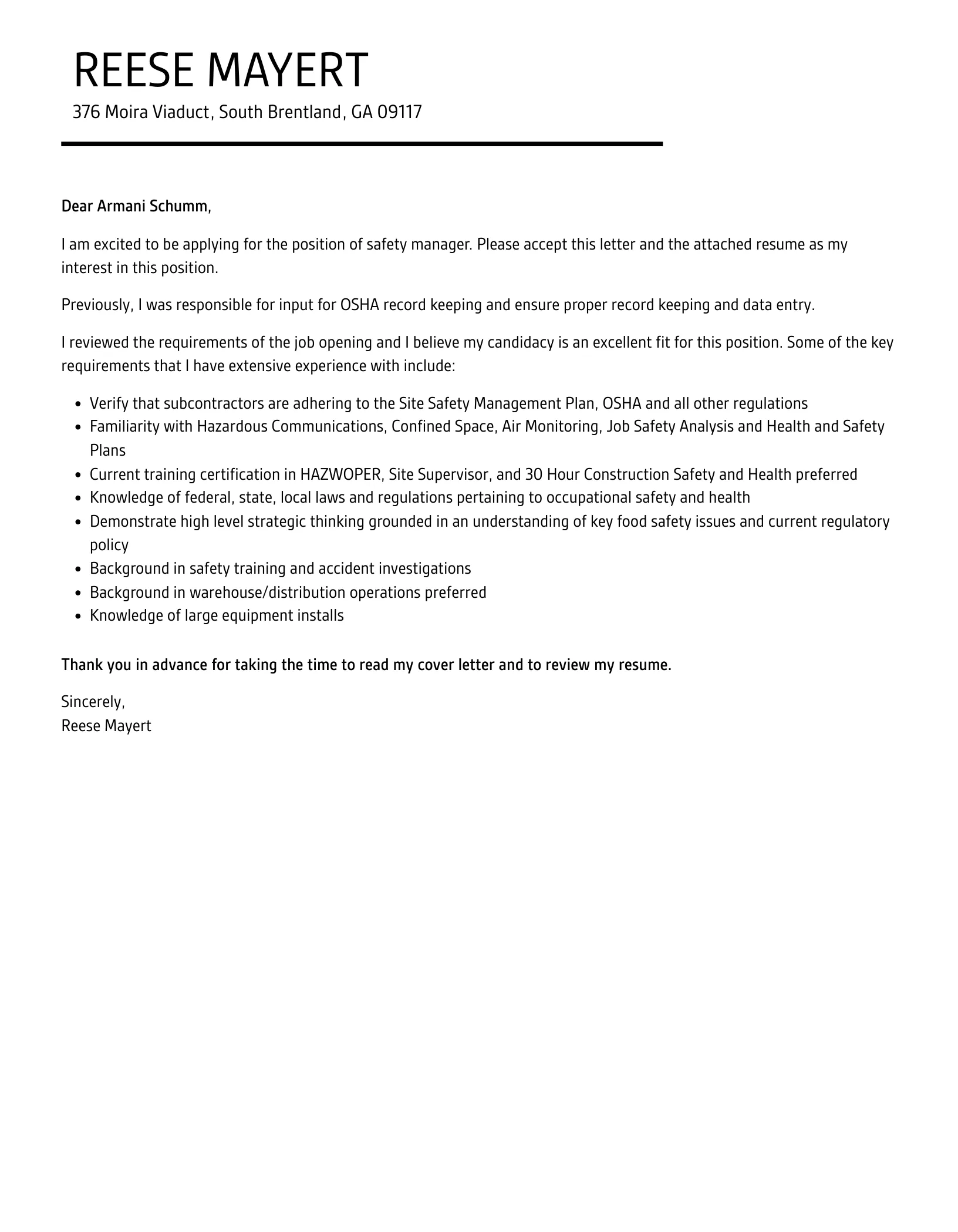A well-crafted cover letter is your first impression on a potential employer, especially in the safety officer field. It’s a chance to showcase your skills, experience, and passion for workplace safety, setting you apart from other candidates. This guide will walk you through how to write a compelling cover letter that highlights your qualifications and increases your chances of landing an interview. We will be going over each section one by one to ensure you create a perfect cover letter. Remember that the objective of a cover letter is to clearly demonstrate your value proposition to the employer, explaining why you are the best fit for the Safety Officer role.
Essential Cover Letter Sections for Safety Officers
Your cover letter should be well-organized and include specific sections that address key aspects of your qualifications and suitability for the role. Each part serves a crucial purpose in conveying your professionalism and expertise, showcasing the skills required for workplace safety. Ensure that each element is clear, concise, and tailored to the job description. The cover letter is designed to give the hiring manager a quick, comprehensive overview of your capabilities and why you’re an ideal match for the position. The following sections are vital for a compelling cover letter.
Contact Information
At the top of your cover letter, provide your contact information. This ensures that the hiring manager can easily reach you. Accuracy and clarity are essential to make sure the recruiter can immediately reach out to you for interviews. This includes your name, phone number, email address, and optionally, your LinkedIn profile URL. The contact information should be formatted neatly and professionally. Use a standard, readable font size. Do not include any other social media profiles unless they are relevant to your professional experience and the job description. This clear presentation establishes professionalism right from the start.
Applicant Information
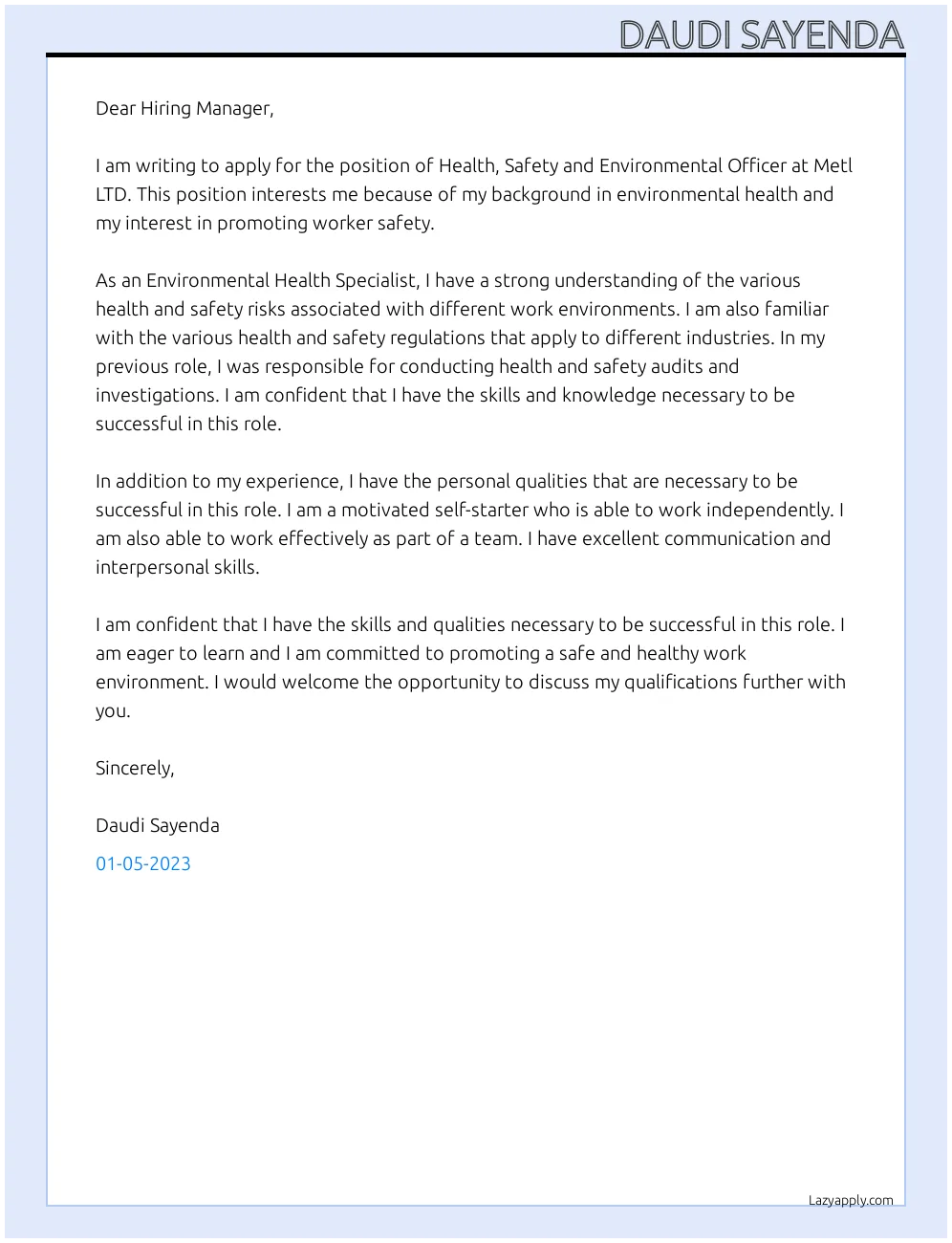
Include your full name, address, phone number, and professional email address. Ensure your email address sounds professional, avoiding nicknames or informal language. For instance, use something like “john.doe@email.com” instead of “johnnyboy123@email.com”. Double-check the accuracy of your contact details to prevent any missed opportunities. This section is the first thing a recruiter will see, and its accuracy is crucial for them to reach out to you.
Hiring Manager Information
Whenever possible, address the cover letter to the specific hiring manager. Research the company’s website or use LinkedIn to find the name and title of the hiring manager or the person responsible for reviewing applications. Addressing the letter to a specific person adds a personal touch and shows you’ve taken the initiative. If you can’t find a specific name, use a professional title like ‘Hiring Manager’ or ‘Recruiting Team’ rather than a generic greeting like ‘To Whom It May Concern.’ A personalized approach demonstrates your attentiveness to detail.
Opening Statement
Your opening statement should immediately capture the hiring manager’s attention and state your intention to apply for the Safety Officer position. Clearly mention where you found the job posting, and briefly summarize why you are a suitable candidate. Tailor this opening to match the job description and express your genuine interest in the company and the role. Start with a strong statement to grab their attention, but keep it concise to ensure they keep reading. This establishes the purpose of your letter and encourages the reader to continue. Highlighting your enthusiasm from the start sets a positive tone.
Highlighting Your Skills and Experience
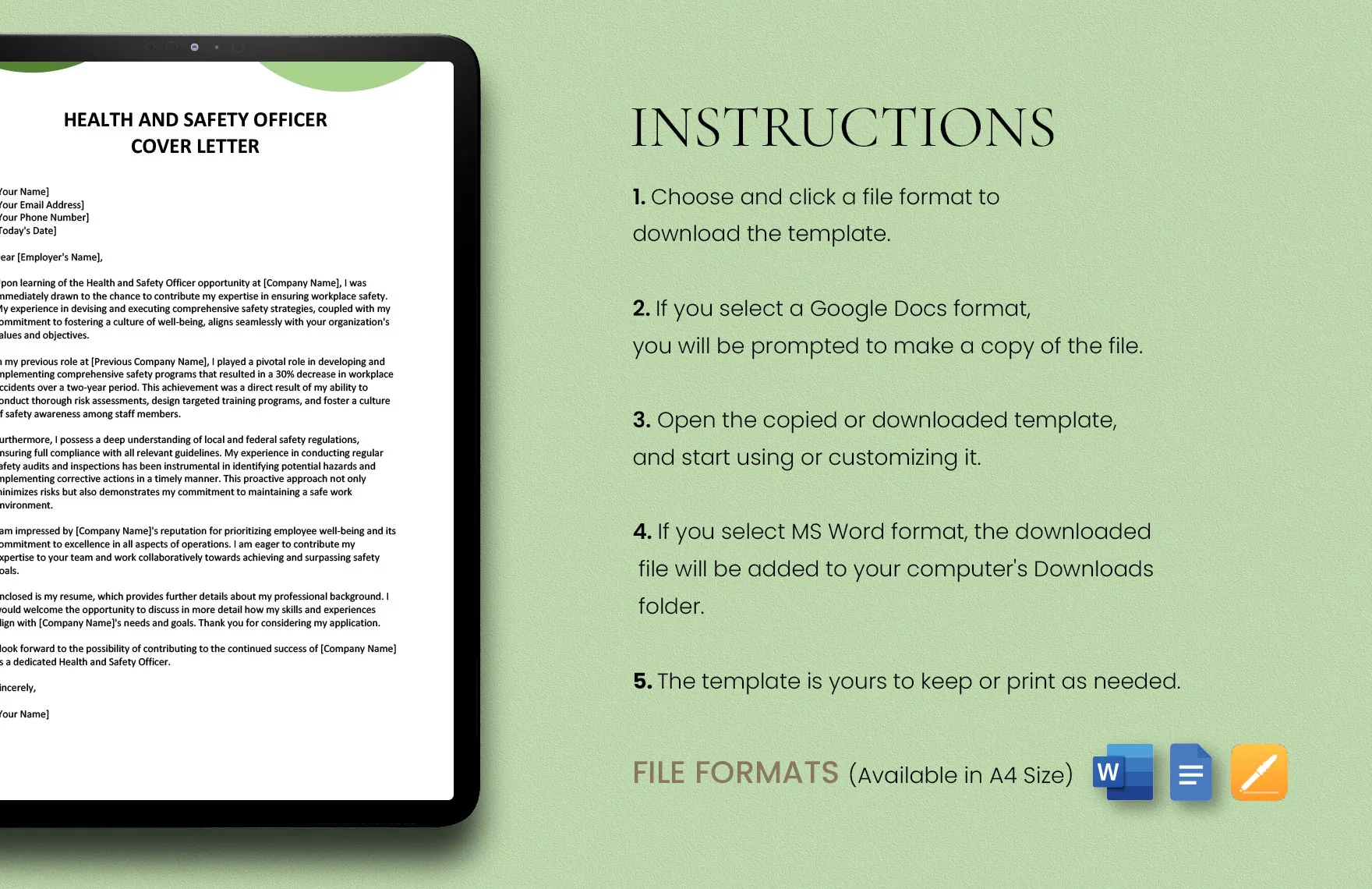
This section is where you demonstrate your value to the company. Focus on showcasing your relevant skills and experience by providing specific examples of how you’ve achieved success in past roles. Use the job description as your guide to identify the key skills and requirements, and then tailor your cover letter to highlight those points. Use action verbs to describe your accomplishments and quantify your achievements whenever possible. This section must highlight how your skills align with the employer’s needs. It shows you’ve understood the job and what they’re looking for in a candidate. Give detailed examples to make your application more believable.
Key Safety Certifications and Training
List all of your relevant safety certifications and training, such as OSHA certifications, First Aid/CPR, or any other specialized training pertinent to the role. Mention the certifying organization and the date of certification. These credentials are proof of your knowledge and adherence to industry standards. Including these details makes your application more credible and shows your commitment to workplace safety. Prioritize certifications that are most relevant to the job description, and be sure to keep the information up to date. This is a critical factor for the hiring manager, so be sure to highlight them effectively.
Specific Safety Achievements and Projects
Describe specific safety projects or achievements from previous roles. This includes any initiatives you led, improvements you implemented, or significant outcomes you helped achieve. Provide specific examples, such as reducing workplace accidents, improving safety protocols, or implementing new safety programs. Use the STAR method (Situation, Task, Action, Result) to clearly explain each project. Detail the context of the situation, your role, the actions you took, and the positive results. Provide as much detail as possible so the hiring manager can grasp your contribution and the impact of your work. Use concrete examples to emphasize your accomplishments and capabilities.
Quantifiable Results and Metrics
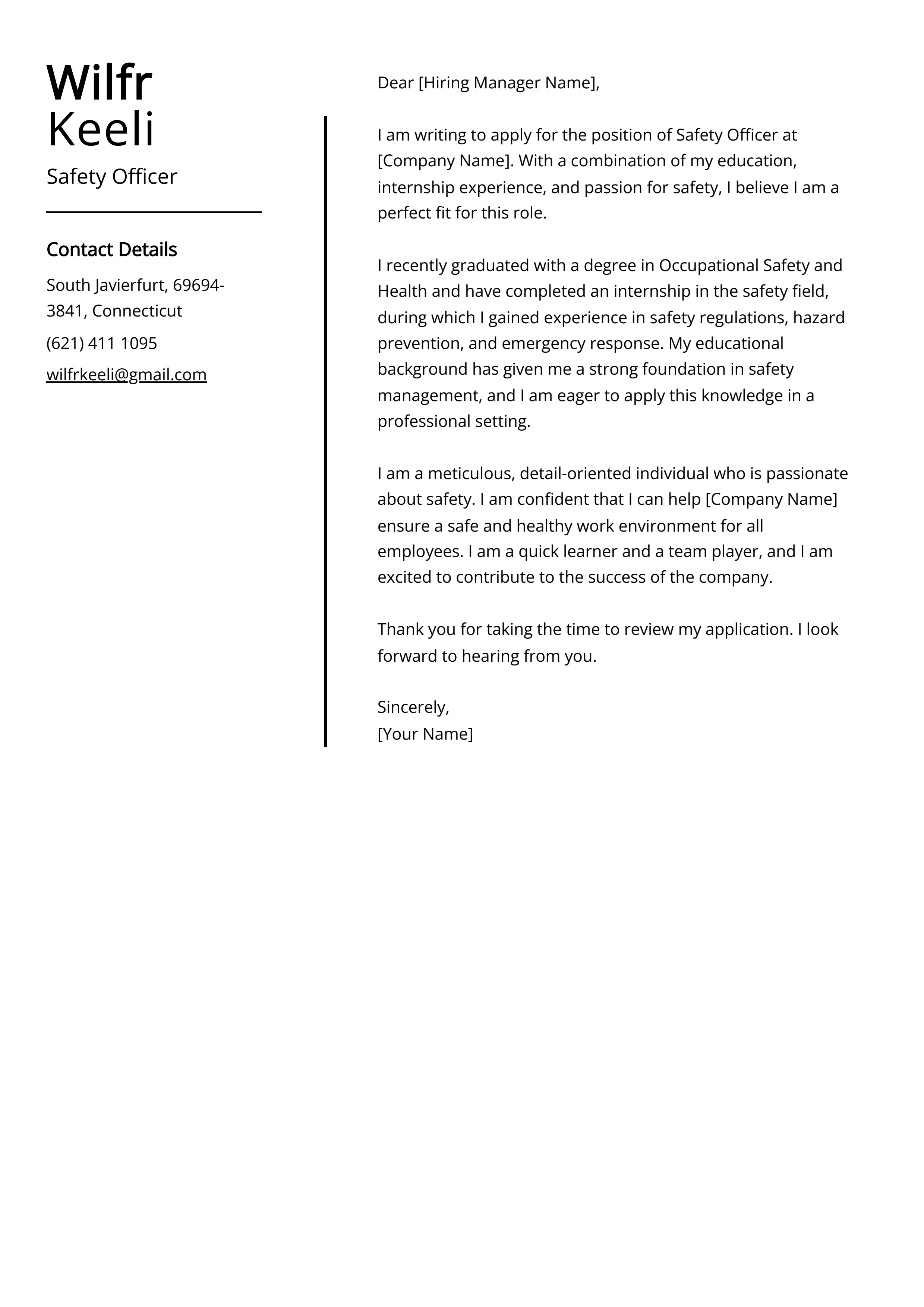
Whenever possible, quantify your achievements. Use metrics to demonstrate the impact of your work on workplace safety. For example, state the percentage reduction in workplace injuries, the number of safety violations you corrected, or the cost savings you achieved through improved safety practices. Numerical data provides objective evidence of your effectiveness and the value you bring to an organization. It helps to make your application more persuasive. Include numbers to make your claims more credible, and show the impact your work has in the workplace.
Expressing Your Passion and Enthusiasm
Demonstrate your genuine interest in the role and the company. Explain why you’re passionate about workplace safety and what motivates you to excel in this field. Reflect on your understanding of the company’s values and how your skills align with their mission. Conveying your enthusiasm can leave a lasting impression. It helps to differentiate you from other candidates. Show your genuine excitement for the opportunity, and highlight how the role aligns with your career goals. Expressing your passion makes you more memorable and demonstrates your commitment to contributing to the company’s success.
Closing Your Cover Letter
Your closing should be professional and leave a positive final impression. Clearly state your availability for an interview and thank the hiring manager for their time and consideration. Reiterate your interest in the position and express your hope for a positive response. This is the final opportunity to reinforce your enthusiasm and leave a favorable impression. It should concisely summarize your key qualifications. It should also be followed by a professional sign-off.
Call to Action and Next Steps
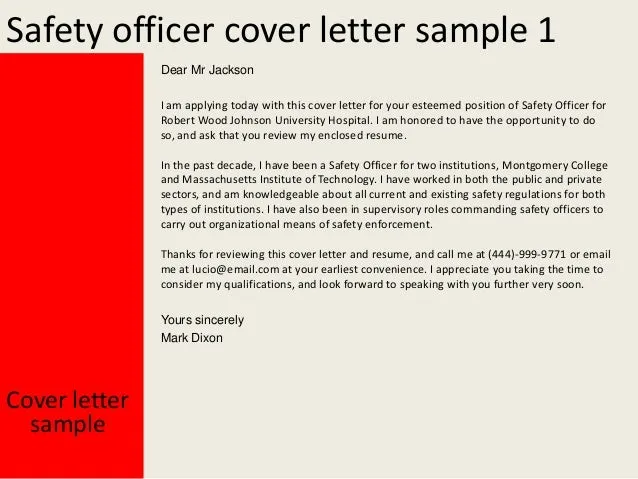
End your cover letter with a clear call to action. State your availability for an interview and indicate how you can be reached. Provide your contact information again to ensure it’s easily accessible. Express your eagerness to discuss how your skills and experience align with the company’s needs. Making it easy for the hiring manager to contact you increases the chances of getting a response. It shows that you are proactive in your approach to the job search and ready to take the next steps.
Professional Sign-off
Use a professional closing, such as “Sincerely,” “Best regards,” or “Respectfully.” Ensure that your sign-off matches the tone of your letter. Type your full name below the closing. If you are sending a physical copy of your cover letter, leave space for your signature above your typed name. A professional sign-off reinforces your professionalism. It completes the letter with a polished look, and this is essential to leave a positive lasting impression. Ensure it reflects your respect for the hiring manager.
